6 Entertainment Trends We can Expect in the Future
The Cyclical Patterns of History and Storytelling
A Predictive Model:
I’m a Generational Theory nerd. It’s become a habit and a private game for me to profile individuals I know online according to GT. I even note when works of film/fiction conform (or don’t) to the theory. I cringe every time somebody refers to “Generation Y,” “Zoomers,” “Alpha,” “Jones,” etc.*
Strauss & Howe, despite their failings, really figured something important out in developing GT. It is predictive. Not hyper-specific, mind you. I can’t tell you what the temperature, wind speed, humidity and precipitation will be on February 3, 2034, in Boonieville, Nebraska. But I can tell you with confidence it will be cold, broadleaf trees will be bare, flowers won’t be blooming, some animals will be hibernating, and there’s likely as not to be snow on the ground. That’s how generational theory works.
Strauss & Howe, when writing decades ago about the Fourth Turning we are now living through, didn’t pretend to know exactly what would happen; but they knew America would be facing what they call a secular crisis. They did mention a few possible specifics, including a “pandemic.” And they proposed that the year 2020 might be significant in the chronology of the Crisis.
The American Historical Cycle:
Just as there are four seasons in a calendar year, there are four turnings per saeculum. A saeculum lasts for the length of a long human life, or approximately 80-100 years. A turning lasts for two decades, give or take a few years. Here’s what can be expected in the respective historical seasons:
The First Turning is called the High. The economy recovers. Peace ensues. Soldiers come home. Young people get married and start families of their own. New institutions are built. Our most recent high was the postwar period from 1946 to the JFK assassination in late 1963.
The High is symbolically linked to the spring, when the weather becomes pleasant, flowers bloom, trees grow their leaves again, grass turns green again and animals come out of hibernation.
The Second Turning is an Awakening.
This is an era when institutions are attacked in the name of personal and spiritual autonomy. Just when society is reaching its high tide of public progress, people suddenly tire of social discipline and want to recapture a sense of personal authenticity. Young activists and spiritualists look back at the previous High as an era of cultural poverty.
From the aftermath of the JFK assassination up to 1984, was the last one. Awakenings correspond to the summer, when temperatures continue rising. In fact, it gets uncomfortably hot. You forget how bleak the winter was, and stop appreciating the relief from the cold. At least, you take that relief for granted.
The Third Turning is an Unraveling. It corresponds to the autumn, with a temporary comfortable period during the transition. But leaves fall off the trees, flowers die, grass turns yellow, and animals start hoarding.
Institutions become corrupt, less effective, and distrusted. Mismanagement spawns problems that will grow until they require radical change to repair, but public servants will kick the can down the road rather than fix problems before they result in crisis.
The mood of this era is in many ways the opposite of a High. Institutions are weak and distrusted, while individualism is strong and flourishing. Highs follow Crises, which teach the lesson that society must coalesce and build. Unravelings follow Awakenings, which teach the lesson that society must atomize and enjoy. America’s most recent Unraveling was the Long Boom and Culture Wars, beginning in the early 1980s and probably ending in 2008. The era opened with triumphant “Morning in America” individualism and drifted toward a pervasive distrust of institutions and leaders, an edgy popular culture, and the splitting of national consensus into competing “values” camps.
I find it interesting that so many Americans are nostalgic about our last Unraveling, even though our country was already in steep decline by then. Yeah, yeah, I know: the entrepreneurial boom, computers, the Internet, and we spanked Iraq in Gulf War I. But the floor was rotting away underneath us while the “experts” blissfully ignored it.
The Fourth Turning is a Secular Crisis, and we’re in one now.
Remember, we’re not out of this yet. We’re facing a much steeper uphill climb than in the Depression.
In the previous Fourth Turning, America endured the Great Depression and WWII. With that in mind, I’ll paraphrase Winston Churchill:
We are not at the end. This is not even the beginning of the end. It might, however, be the end of the beginning.
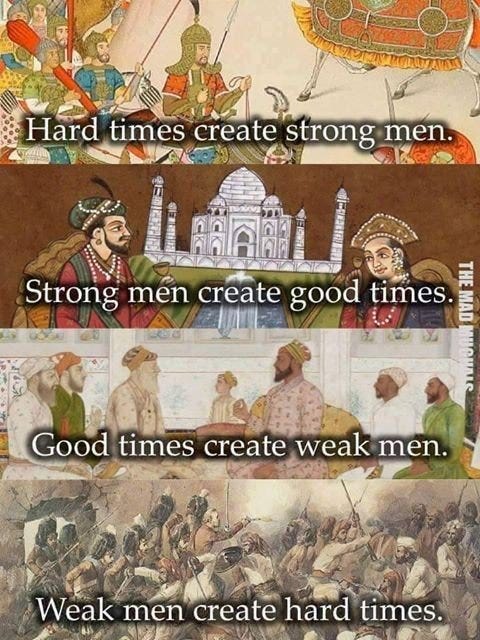
The Generational Archetypes:
These are not to be confused with literary archetypes. In broad strokes, every American generation conforms to one of four distinct peer personalities (which develop according to shared or common experience). They are born in a recurring sequence in sync with the historical cycle.
The archetype I’ll list first is the “Artist.”
Artist generations are born during a great war or other historical crisis, a time when great worldly perils boil off the complexity of life and public consensus, aggressive institutions, and personal sacrifice prevail. Artists grow up overprotected by adults preoccupied with the crisis, come of age as the sensitive young adults of a post-crisis world, break free as indecisive midlife leaders during a spiritual awakening, and age into empathic post-awakening elders. By virtue of this location in history, such generations tend to be remembered for their quiet years of rising adulthood and their midlife years of flexible, consensus-building leadership. Their principle endowments are often in the domain of pluralism, expertise and due process.
The last Artists were the Silent Generation (born 1925-42) and the latest are the Homelanders (born beginning in 2005…and still being born).
Next comes the “Prophet.”
Prophet generations are born after a great war or other crisis, during a time of rejuvenated community life and consensus around a new societal order. Prophets grow up as the increasingly indulged children of this post-crisis era, come of age as narcissistic young crusaders of a spiritual awakening, cultivate principle as moralistic midlifers, and emerge as wise elders guiding another historical crisis. By virtue of this location in history, such generations tend to be remembered for their coming-of-age passion and their principled elder stewardship. Their principle endowments are often in the domain of vision, values, and religion.
Sound like any particular generation you’re familiar with? Maybe the first generation to get its own name (the older ones have been named retroactively)? If you said “Boom,” you are correct.
FYI, Strauss & Howe are Boomers, so it’s safe to assume that any whitewashing of the Boom legacy is motivated by that, however subconscious.
Most folks will say the Boomers were born from 1946-64, which was, in fact, the postwar “baby boom.” The birth rate among US citizens did hit a huge, sustained spike during those years. But Generational Theory identifies generations according to peer personality, AKA: conformity to an archetype. Therefore, the Boomers were born from 1943-60.
The previous “Prophet” generation were the Missionaries. That youthful passion was put to better use in their case, you could argue.
Next is the “Nomad.”
The previous Nomads were the Lost Generation, and the current ones are X. They were originally identified as the 13th Generation, or “13ers.” But “X” caught on, I’m convinced, because the Boomers preferred it. We were just Brand X, you see. We couldn’t possibly ever be as important as the Boomers. We didn’t have their consciousness, see? Compared to them, we just had no identity. We were a bunch of apathetic, hellraising slackers who took cynicism too far. Brand X. We could never be as groovy as them.
Nomad generations are born during a spiritual awakening, a time of social ideals and spiritual agendas when youth-fired attacks break out against the established institutional order. Nomads grow up as underprotected children during this awakening, come of age as alienated young adults in a post-awakening world, mellow into pragmatic midlife leaders during a historical crisis, and age into tough post-crisis elders. By virtue of this location in history, such generations tend to be remembered for their rising-adult years of hell-raising and for their midlife years of hands-on, get-it-done leadership. Their principle endowments are often in the domain of liberty, survival, and honor.
Nomads are the middle child of the generational family.
Then, lastly, we have the “Hero.”
The previous “Heroes” were the G.I. (“Greatest”) Generation.
Hero generations are born after a spiritual awakening, during a time of individual pragmatism, self-reliance, laissez faire, and national (or sectional or ethnic) chauvinism. Heroes grow up as increasingly protected post-awakening children, come of age as the heroic young team-workers of a historical crisis, demonstrate hubris as energetic midlifers, and emerge as powerful elders attacked by another awakening. By virtue of this location in history, such generations tend to be remembered for their collective coming-of-age triumphs and their hubristic elder achievements. Their principle endowments are often in the domain of community, affluence, and technology.
It’s a joke and a meme to compare the previous “Hero” generation (the G.I.s) with the present one, because on a superficial level, they couldn’t seem more different. Drum roll, please…it’s the Millennials.
It’s important to point out that the Millennials’ legacy isn’t complete, yet. Before WWII, the G.I.s also had some snowflake tendencies. And remember: the young tech geniuses working for DOGE are late-cohort Millennials.
Some Caveats:
First of all, Generational Theory is built on generalities. I am not suggesting that every single individual from a given generation is an exact duplicate of the respective archetype, down to the nth degree of every attribute. Every rule has its exceptions, and every cohort has its exceptional members. Some children are raised poor, even in affluent times, while some are raised privileged, even during times of widespread poverty. Some are raised in dysfunctional homes, even when the average family is generally strong, and vice-versa. When the average family is weak, disintegrating, irrelevant, whatever, some children will have it even worse than the norm. And so on.
Strauss & Howe may or may not have noted this somewhere, but I have noticed that an individual born close to the discontinuity between generations is likely to have a mixture of both peer personalities. Sometimes they may have more in common with the generation on the opposite side of that discontinuity. Barack Hussein Obama is one such example, who technically is Generation X, but has more more in common with the Boomers. Another was a co-worker of mine, who I correctly placed in that same cohort, by observing him during Covidiocy. There was plenty of evidence, but sufficient by itself was his flip-flopping about the mask mandate. One moment he was all for it, because he feared his own mortality and was just too important to risk dying from a Coronavirus. The next moment he would yank it off and spike it on the ground because trying to stop virus particles with a face diaper was like trying to keep mosquitoes out with a chain link fence; because the people mandating it were idiots, hypocrites, and had no authority to mandate it; and he didn’t like being told what to do to begin with.
Just as history shapes the peer personality of generations, the generations will impact history because of, and according to, their peer personalities. For example: the Boom was shaped by the childhood of largesse and zeitgeist of indulgence from its parent generations, followed by the JFK assassination, the televised murder of the primary suspect while in police custody, and the ridiculous cover-up which persists to this day; then more assassinations; Kent State; Watergate; etc. The Boom has been running our institutions for most of their own lives and all of ours, and the impact they’ve had is all around you, everywhere you look—economics; race relations; the level of trust now in society in general; the media; academia; our military; effectiveness of those and every other institution at fulfilling their ostensible purpose; our foreign policy track record; and the state of our country’s spiritual condition.
Though I’m convinced that history is, in fact, cyclical, there are two aspects that progress in a linear fashion: technology and morality. If you’ve ever been to the ocean, you know waves go back and forth, but they advance increasingly closer as the tide comes in, and recede farther away as the tide goes out. Likewise, the cultural changes predicted by Generational Theory do occur, but in a context of a larger trend that correlates to the linear advance of technology and the free-fall of morality.
What Is Already Being Fulfilled and What We Can Still Expect:
The Option of Ignoring the Problem Disappears
During a secular crisis, those growing problems (in the can that’s been kicked down the road for so long) hit critical mass, and must be dealt with one way or the other.
In America’s first secular crisis, we declared, and won, independence. Then the federalists got a new Constitution ratified. In the next Fourth Turning, we finally settled the issue of slavery by fighting each other in the worst war we’ve ever experienced. In the last secular crisis, we were hoodwinked into perpetuating the usurpations which caused the problems (Great Depression, WWII), and, in fact, even more problems (in the guise of solutions) were introduced which have just about boiled the frog. In this current Fourth Turning, there are some public servants who seem to want to fix these problems; but they are outnumbered by public servants who want to make everything worse still, until what’s left of our republic is lost forever.
And that’s a possibility. After every previous secular crises, the USA has gone through radical change. Each time, the federal government acquires more power, while the states lose rights and the citizens lose liberties. How much more can we lose before the Land of the Free is gone?
Secularization
In a Fourth Turning, there is a move away from the spiritual toward the secular, and we’re seeing that, too. Churches are closing their doors at an extinction-level rate, while what church leadership remains is largely sold out to different gospels and the doctrines of demons.
I’ve observed online calls for a return to this or that church, but the motivation is rarely spiritual conviction—it’s all about traditionalism and societal control. Even the self-identified pagans are not gung-ho about whatever flavor of paganism they advocate (most have not settled on a particular religion yet). Again it’s about restoring ancient traditions and organizing society.
From Chaos to Control
That ties into something else that happens during a Fourth Turning: a widespread desire and push for “law and order.” Since the summer of 2020 we’ve heard some rumbling about it, but if the pattern holds, it will eventually hit a fever pitch.
Culturally speaking, not only can we expect police as heroes in books, movies and video games to become ubiquitous, but I would not expect to see many stories about crooked cops for a while when America crests the peak of this Crisis. This looks to be a ways off, still, because the corruption of law enforcement at every level is still so typical. Figureheads like Pam Bondi, Kash Patel and Dan Bongino have failed to instigate the turnaround in this perception. Sitting on the Epstein client list, and reinforcing the official narrative of Epstein’s “suicide” has probably guaranteed that millions of us will never trust the institutions they preside over, while they still do. Local and state law enforcement, and courts at every level have a steep public relations climb ahead of them as well.
Nevertheless, mandatory (and blind) respect for authority figures will happen if the pattern holds.
Rugged Individualism Gives Way to Collective Effort
As a poster child for Generation X, I can tell you with absolute confidence that uniting a group of my peers for any sort of cooperative effort is like herding cats. Maybe one reason the alienated loner hero was so popular during our youth is because that’s what most of us were, and still are. Even when we have families of our own, that is the natural state of affairs outside our families.
One reason there’s such a noticeable generation gap between us and the Millennials is because our self-reliance is as perplexing to them as their need for community is to us.
“Identity politics” has been so successful in the woketard era at least partially because the young generations don’t see themselves as individuals so much as members of a collective. It’s evidently a psychological need they have, as strong as X’s need for autonomy. Unfortunately, the demographic they are loyal to isn’t simply “Americans” like the G.I. and Silent Generations, but “women” and/or “LatinX” and/or “P.O.C.” and/or whatever demographic, ad nauseum.
Abandonment of American Ideals
Unfortunately, Americans during a Fourth Turning prefer “strong man” leadership to processes that leave our liberties intact. They want somebody who’s going to fix stuff, Constitution be damned. I have definitely witnessed this attitude building. It is painfully visible among supporters of both Obama and Trump.
In the past, surrendering our rights to such leadership has been painted as patriotic, and probably will be again. This didn’t just happen during the world wars. “Patriot Act,” anyone?
You can see how the invasion across our borders has herded us toward support of national I.D. and possibly “papers please” checkpoints for anybody traveling anywhere. Renegade federal judges assuming authority they were never given has made us more favorable to increasing the autocratic power of the President for the immediate purpose of overruling those treasonous judges, from the Oval Office. The corruption of Congress is herding influencers to opine that representative government itself needs to be abolished.
Moronic celebrities told us that the President is “our boss” when Hussein occupied the White House, that he should be given more power “to do what needs to be done,” while others openly blasphemed in his name, and media presstitutes gushed about the sexual thrill they got when he spoke. Now “our Lord and Savior Barack Obama” has given way to “God-Emperor Trump,” who, like Hussein, also stars in some recent fiction as a sort of superhero. Or, in Generational Theory terms…
The Orange Champion?
Every Fourth Turning, a figure rises to prominence who Strauss & Howe refer to as “the Gray Champion.” It is always someone elderly from a “Prophet” generation, who suffered many failures early in their career before their star began to rise, and their worldview only solidified shortly before attaining their highest position. They have forceful personalities and are able to bend others to their will. The country unites around them to resolve the secular crisis. They alone seem to have the vision of how to overcome the momentous problems threatening to overwhelm the country, and emerge stronger on the other side of it. The last two Gray Champions achieved the office of President (Lincoln and FDR) and spearheaded a changing of the guard that would position their formerly weak parties to dominate politics for most of the next saeculum.
Even when it was unclear if he would be able to overcome election rigging in 2024, Trump was the only candidate that even remotely resembled a Gray Champion. There’s not much doubt left that he will fulfill this role.
A Tilt Toward the Masculine
Remember that Trump won three consecutive Presidential elections. In the two that weren’t successfully stolen from him, he defeated Establishment-backed women. That may or may not be coincidental, but is noteworthy as a potential bellwether for this trend.
In Awakenings and Unravelings, America gets in touch with its feminine side. Children generally relate better to their mothers than their fathers, and are more comfortable with matriarchal power structures. You’d have to be blind not to recognize this pattern solidifying in pop culture for the last half century. It’s so in-your-face at this point that even normies can’t deny it. Throw a rock in the world of entertainment and you’ll hit a story built around feminist precepts. Our cultural svengalis have buried us under the Strong Female Character as part of their gender-bending agenda. Boomers and the average Xer have gobbled it all up for decades, asking for more. The Entertainment Establishment is happy to oblige.
In Crises and Highs, the pendulum swings the other way. We can expect this trend to reveal itself if the pattern holds. In fact, I see the trend developing already. The late cohort Millennials and Homelanders (as they grow into independent consumers) are suffering Grrrlboss Fatigue. They’ve had these feminist messages rammed down their throats all their lives, and it doesn’t interest them much anymore—though they usually can’t articulate why.
I’ve been writing men’s fiction, and writing about it, for quite a while, now, mostly to crickets or knee-jerk accusations of sexism. Suddenly (in the case of my articles about men’s fiction on Substack, at least), my written musings are climbing in popularity.** New alt-publishers have made headlines this year for focusing on producing books that appeal to male readers. There have been dozens of “No Books for Men” videos trending on Youtube recently.
A rising case of Girlboss Fatigue is settling in—especially in the Millennial and Homeland generations. The latter is also rejecting gender confusion in general, yearning for traditional gender roles, father figures, and strong patriarchal leadership. Of course this is anathema to the cultural svengalis who have herded us into our present societal climate. But they are losing control of The Narrative.
Iconic masculine heroes like Rambo are appreciated more now than ever. He’s not just killing bad guys, either, but protecting women and children from real-world dangers.
I’ve recently become aware of a community of men’s adventure fiction fans, and it is growing like a weed. It is not free from feminist influences, and might never be. But the very fact that it exists would have been unthinkable during most of the years I tilted at this windmill.
Feminist dogma is far too deeply ingrained, even in those who assume themselves to reject feminist ideas. Again, waves come and go even while the tide advances or retreats. We will never again see an era as friendly to masculinity as in America from the ‘30s through the ‘50s. But change is coming, however mitigated.
What Can We Expect in Pop Culture?
Hollywood and tradpub may very well keep prancing down the Pink Brick Road to the Land of Pozz, until they collapse or become irrelevant. But in indie, newpub, and/or Iron Age fiction, I expect to see a significant resurgence in male-oriented fiction, with a lot of hero cop tropes. Also more champions of tradition and the institutions, as those institutions are rebuilt or replaced in the real world, and a corresponding general reverence for authority figures.
This will likely translate to indie games, as well. If Iron Age game designers have the resources to compete, you can expect some first person police procedural games.
We’ll probably never be free of warrior womyn cliches, but we might at least have less of them rammed down our throats for the remainder of the Crisis and all during the following High. I also expect to see more functional families depicted in entertainment, with strong, masculine father figures. Less bumbling idiot men in comedies; weak ineffective men in horror and action-adventure; emotional, indecisive men in dramas; abusive, manipulative rapists and con men in suspense thrillers.
Readers/viewers might even lose interest in the ubiquitous LGBT-pandering, so that indie authors on the right, at least, might de-prioritize it to the point it will be easier to find a book that doesn’t bring up sodomy at all.
I see some early narratives in alt-fiction promoting old traditions as a means for secular rehabilitation. In the future, I expect it to become less tentative in the Indiesphere, while any spiritual elements in mainstream entertainment may disappear altogether. Traditions and social organization will be prioritized over any spiritual self-help.
With regard to villains, I expect to see a return of the mastermind and mad scientist, to a degree unseen since the introduction of Lex Luther and Dr. Sivana during the last Fourth Turning. Instead of the current stand-ins for Trump and the MAGA movement, “white supremacist” gangs, “the Patriarchy,” etc., the most popular villain stereotype is likely to be a lone evil genius (Gen X, most likely) who targets authority figures and trusted institutions, introducing chaos to ruin the order of civilization.
We can expect a lot of stories in the future that emphasize the importance of teamwork—whether the stories are about war, superhero teams, police, sports, or whatever. We’ll see themes about how characters must overcome their “toxic” individualism, learn to pitch in and do their part for the greater good.
I had been a published author for a decade before I discovered Generational Theory. Only my graphic novel was begun with an awareness of the theory beforehand. (And I wrote it to deliberately reflect GT in some ways.) And yet, some of my themes position my prose books for potential success in the changes I believe are coming:
I write men’s adventure fiction—books with masculine heroes, for a masculine audience. Some women read and enjoy them, which is great; but they are exceptional. And you will never find a grrrlboss or any LGBT-pandering in my work.
I can relate to the lone wolf action hero, but the books in the Retreads Series, and Street Fighting Man, all emphasize teamwork.
The journey to manhood, a strong father figure, and the ideal of a traditional family are themes woven through the Paradox Series.
My books are Christian-friendly, but the stories are secular, with predominantly secular characters.
Some of the themes, tropes and messages I expect to proliferate before this Fourth Turning is over, but are absent from my fiction, are:
The infallibility of authority figures.
Individualism as a toxic affliction to be overcome.
Religion as a tool to organize/control society (as a positive development, anyway).
A vision for social order trumping individual rights.
If you enjoy my articles here, you will probably enjoy my books. Get yours, and escape into great stories you can immerse yourself in without switching off your brain.
*All those supposed generations were invented by influencers who have neither studied Strauss & Howe’s theory, nor put in equivalent work in the study of American history and identifying its patterns. There’s a website that encapsulates Generational Theory more extensively than I have here, which I recommend.
** My Stack was going like gangbusters when I began writing this article. But between then and now, the rapid growth of my subscriptions, views, likes and comments were all stopped cold, as if switch was flipped.





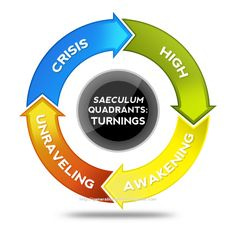

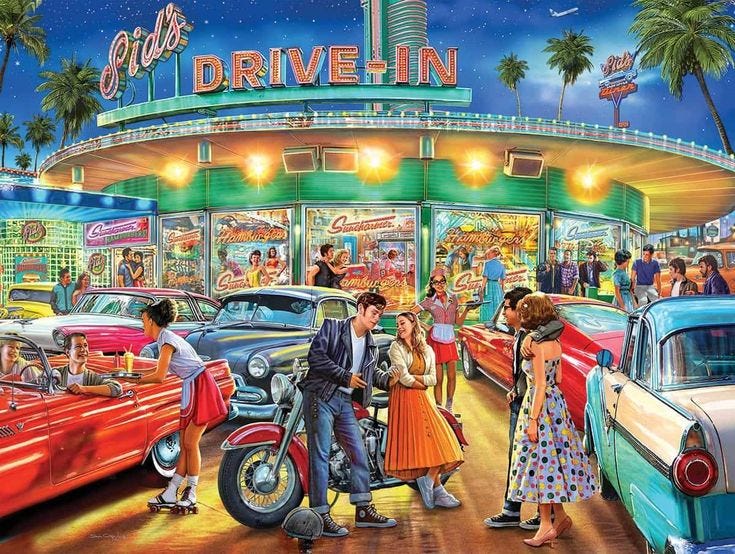
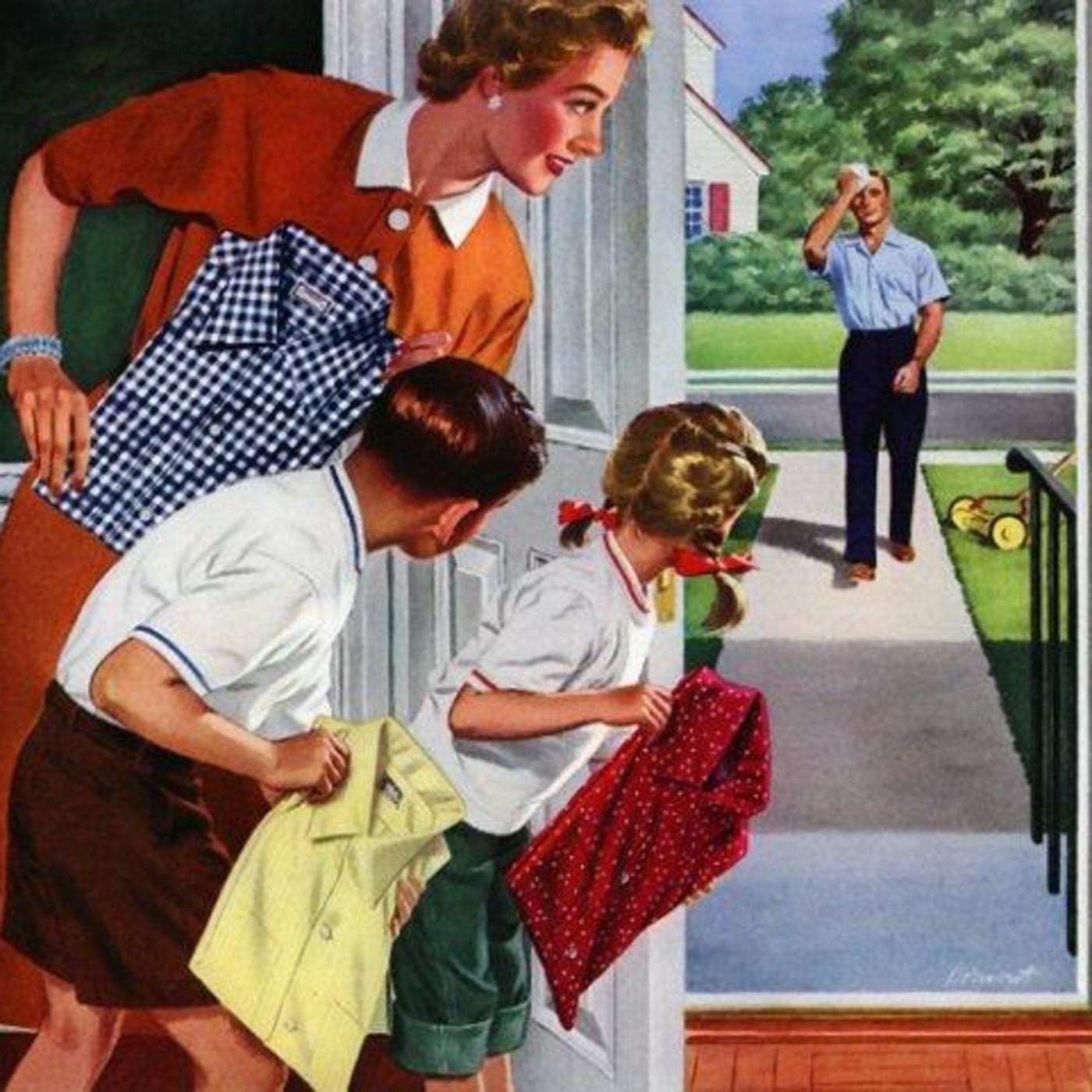

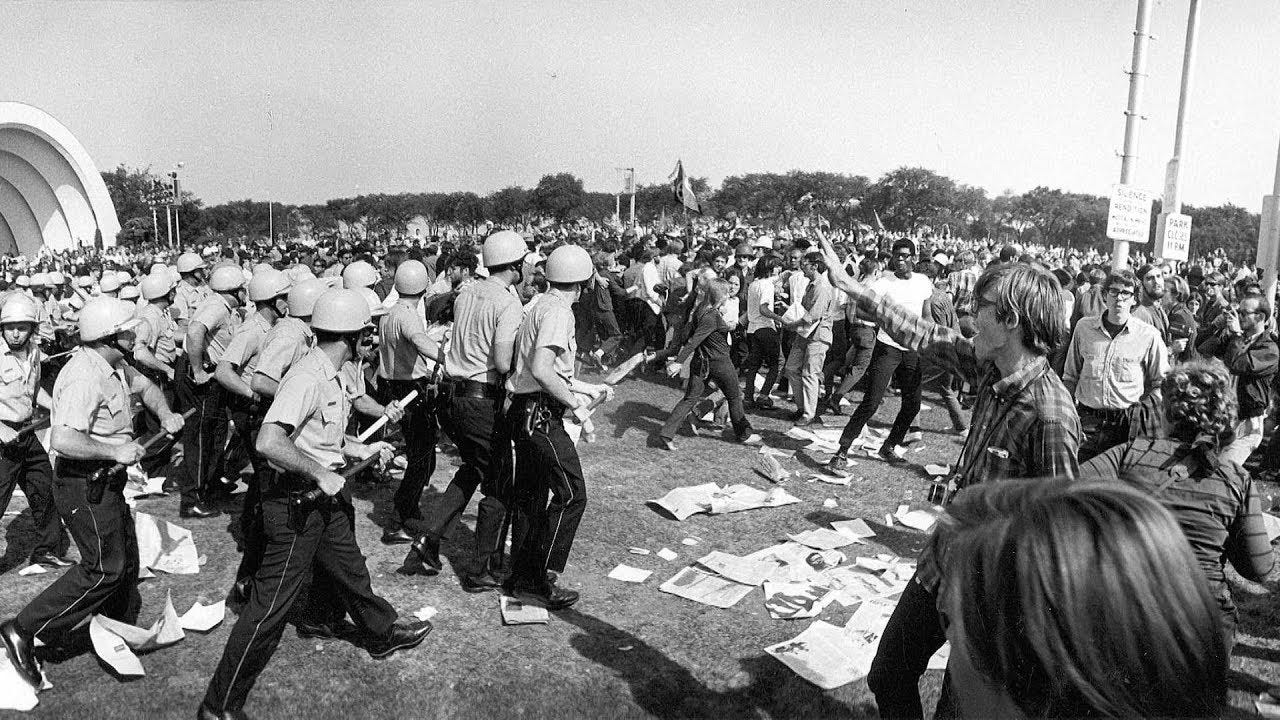
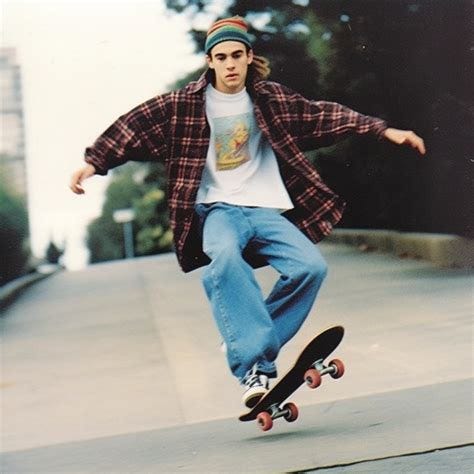

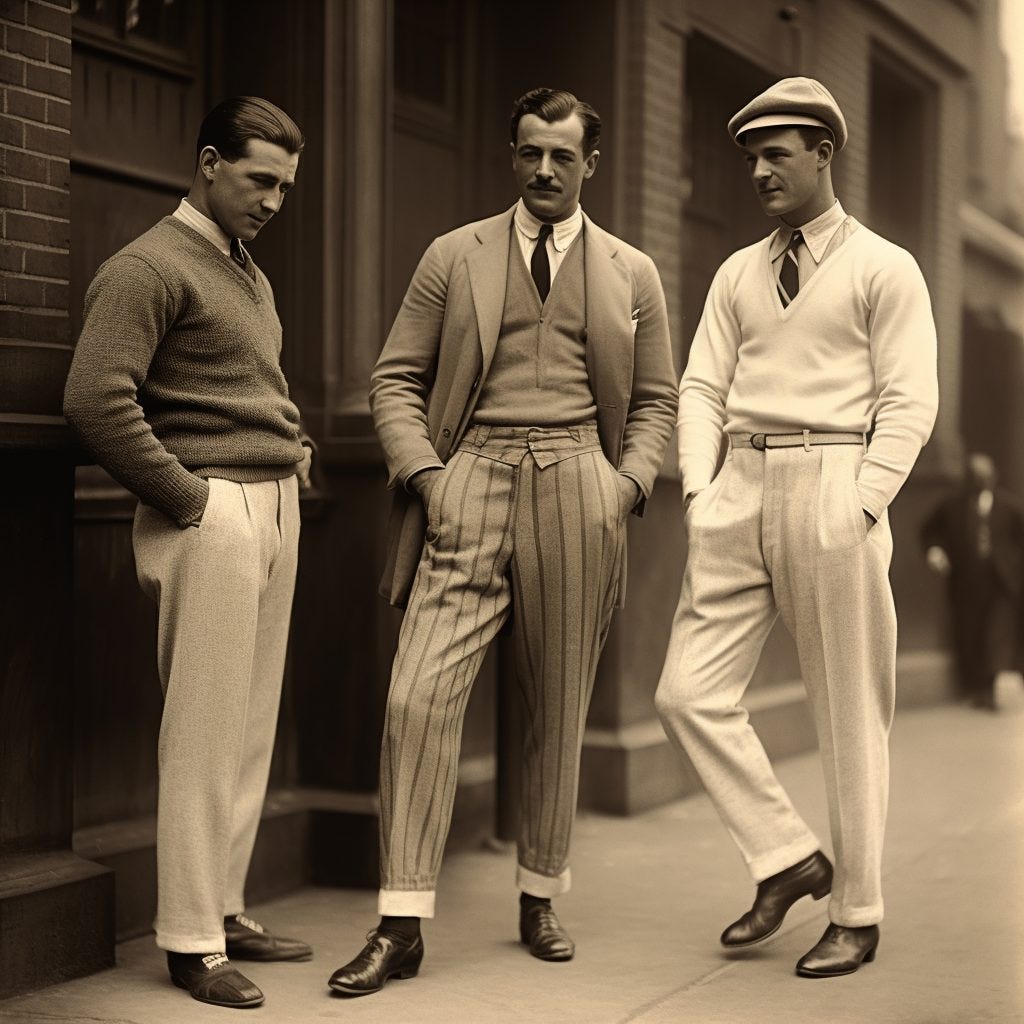
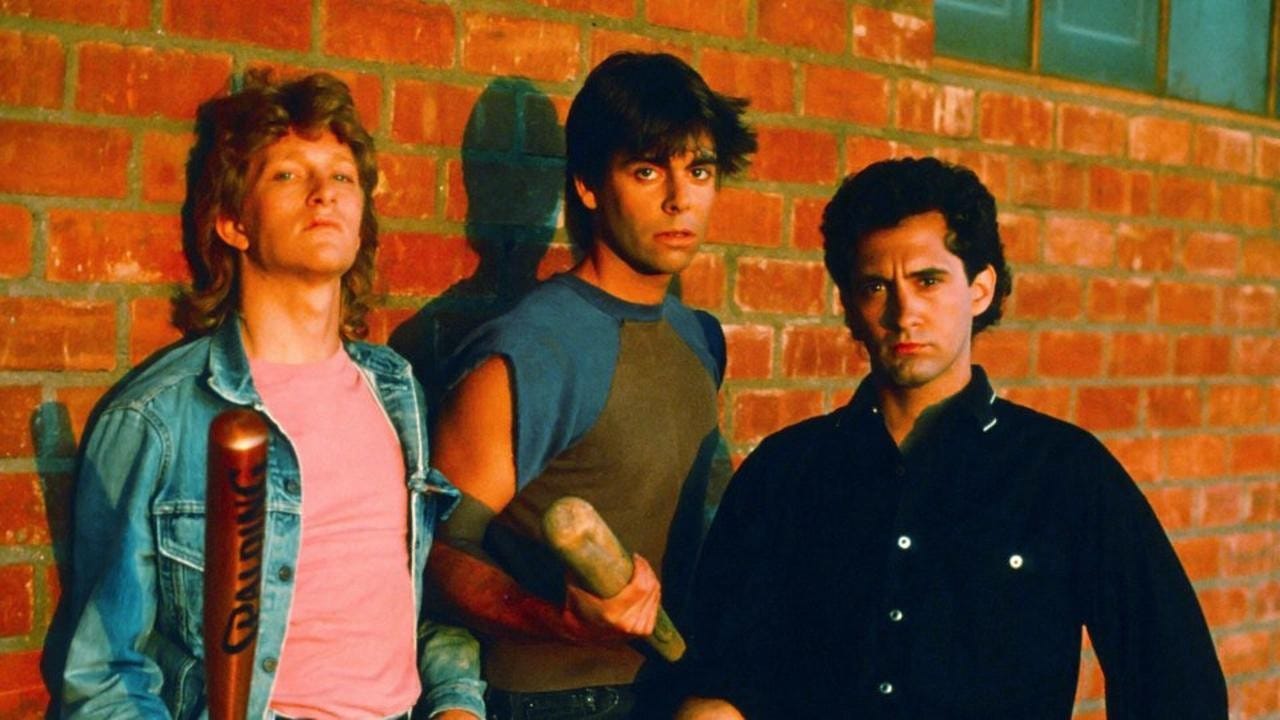

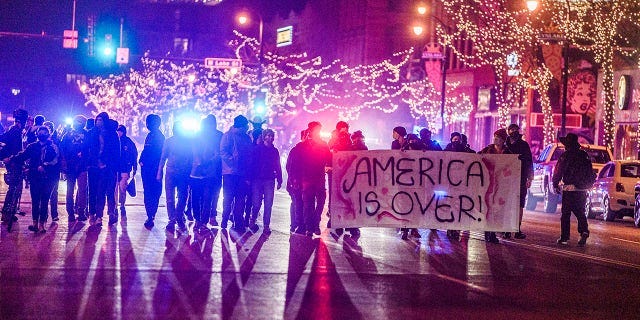




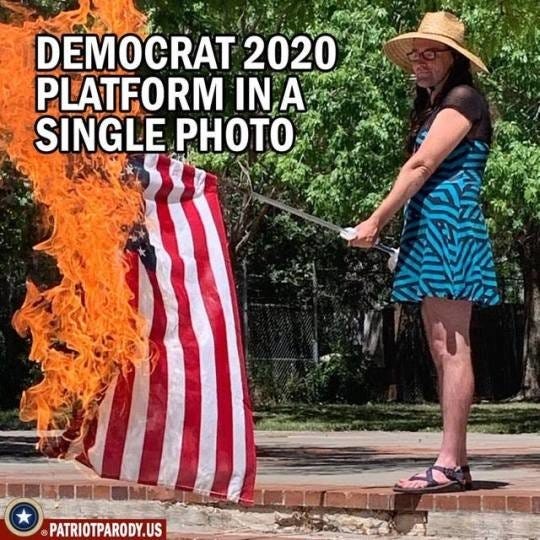


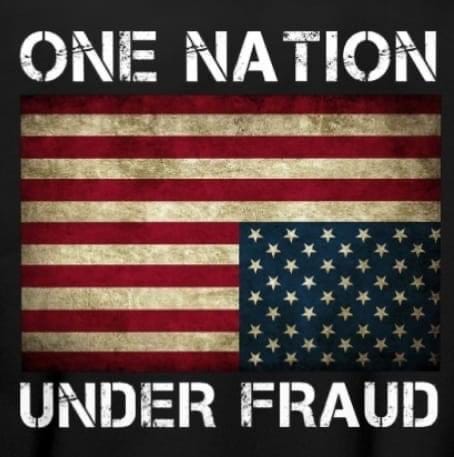
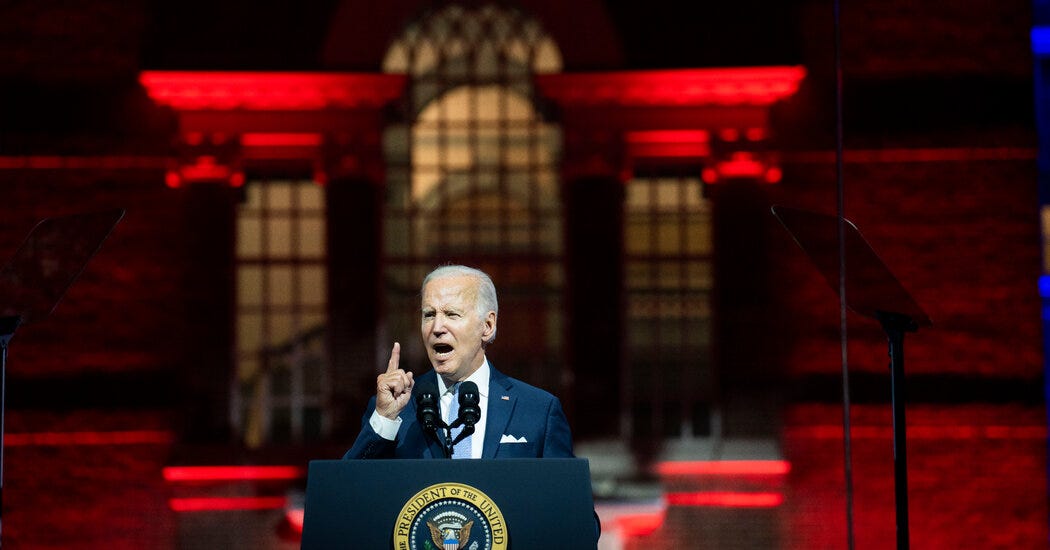
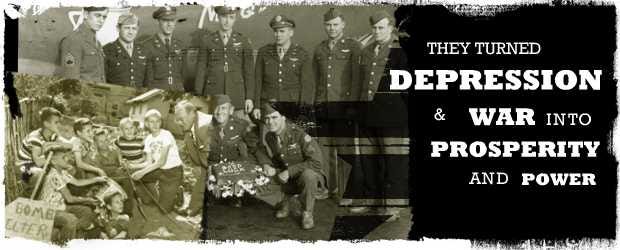
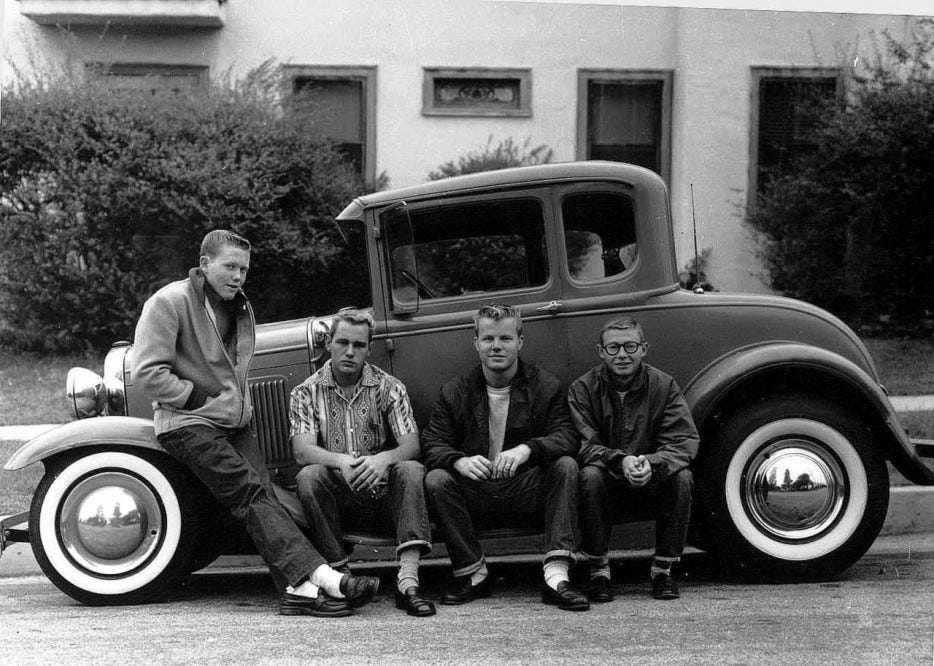
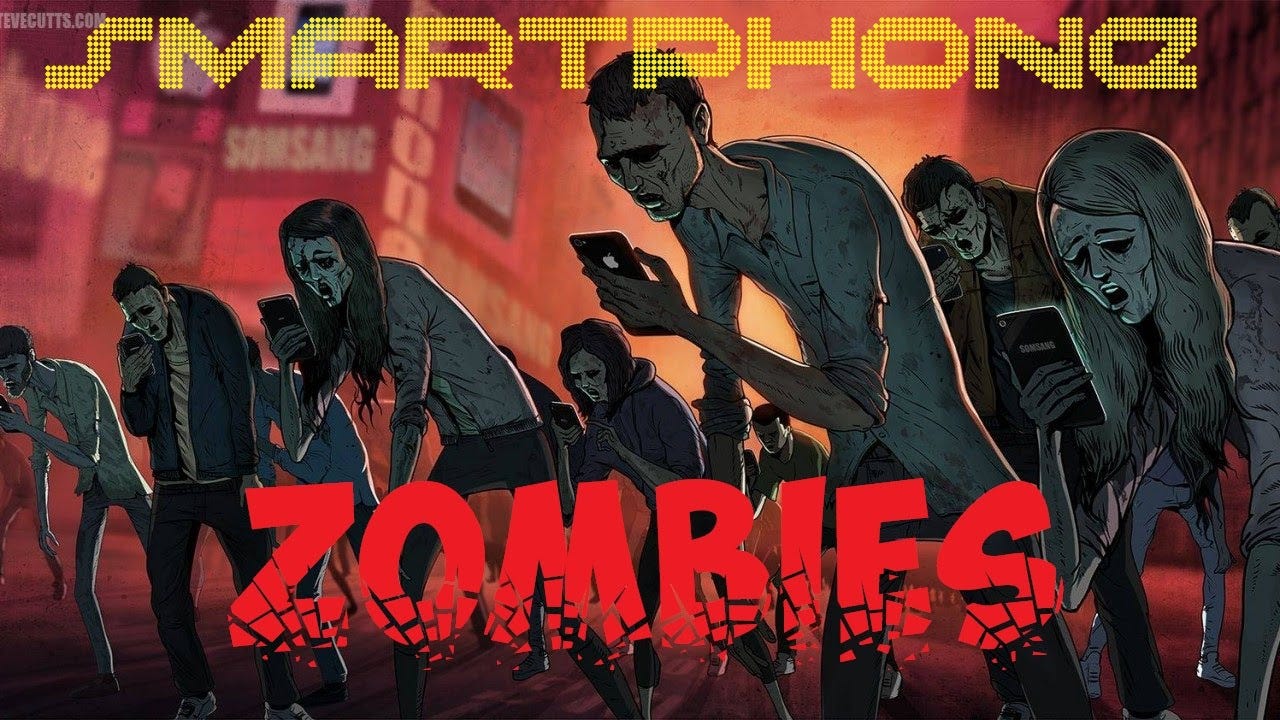

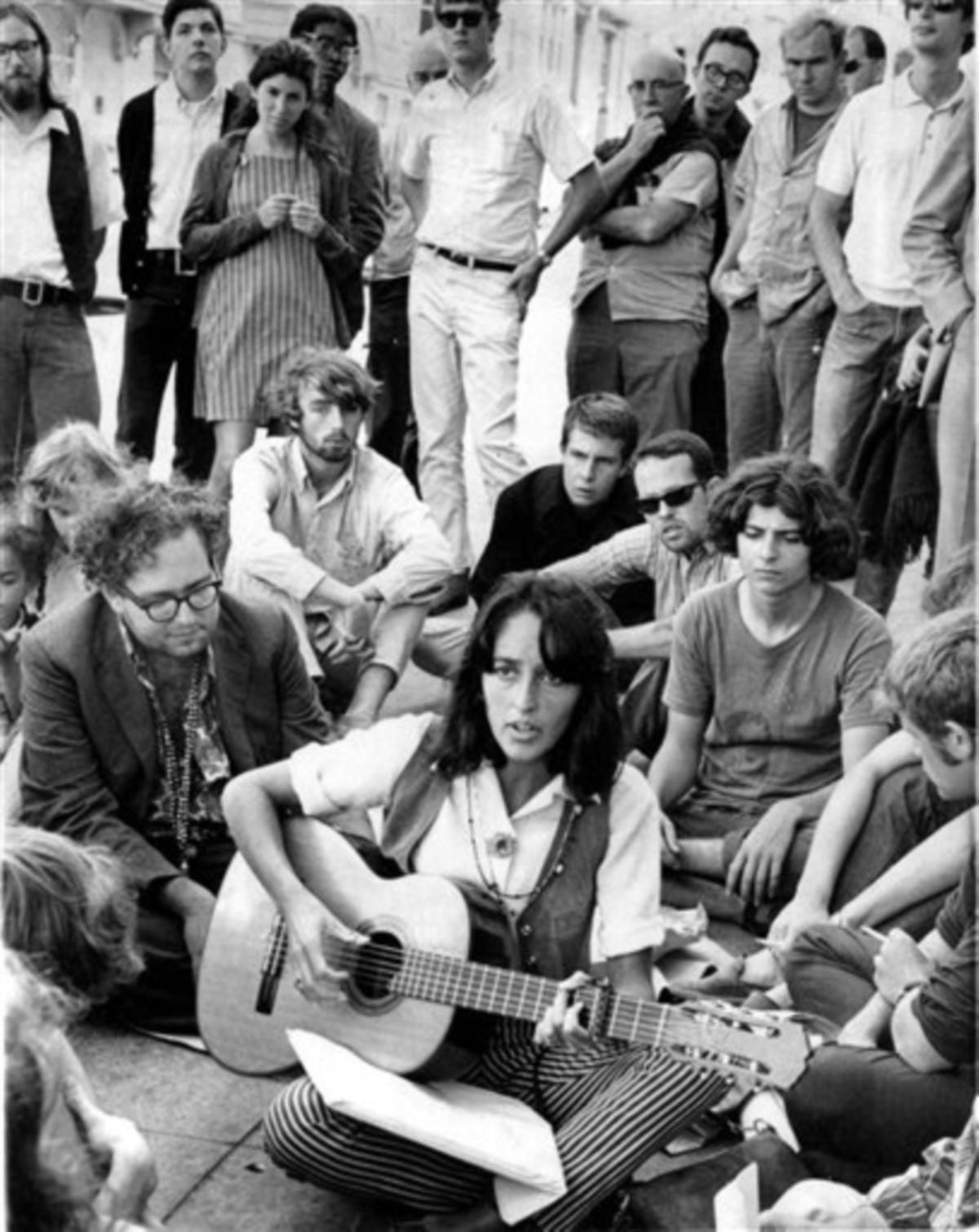
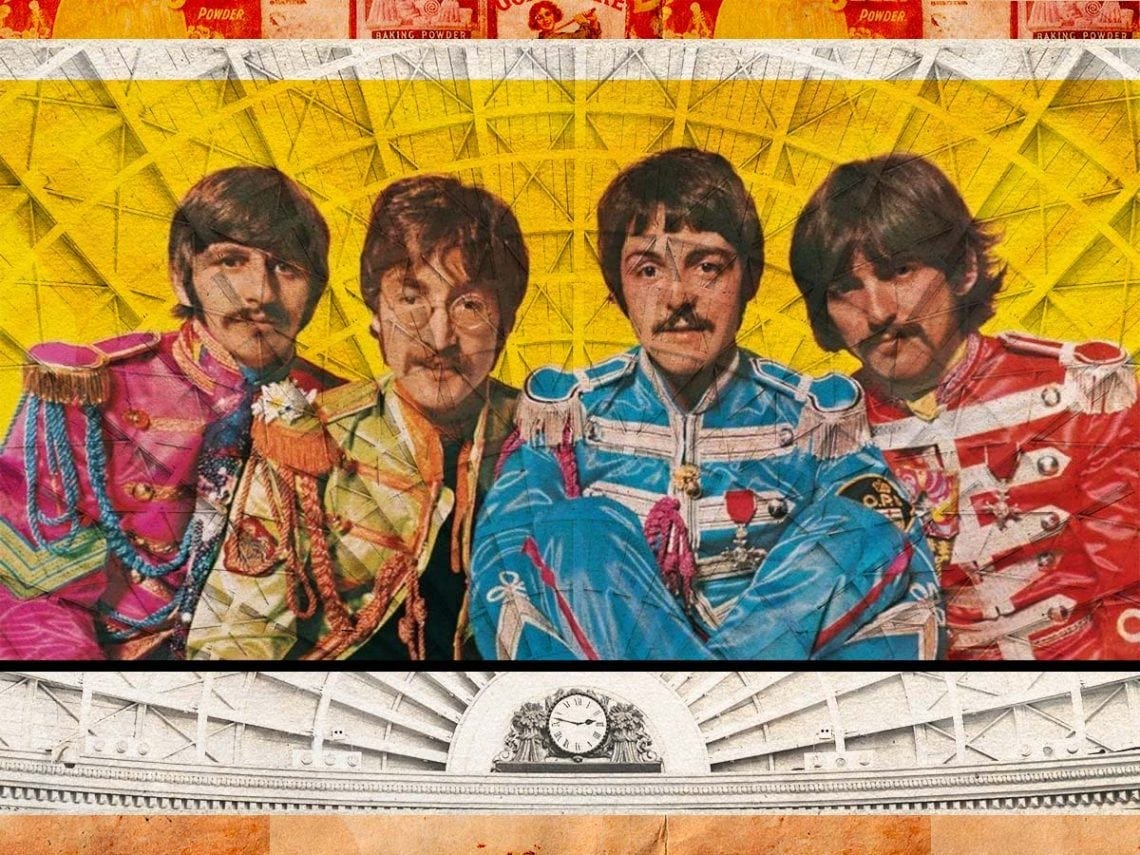
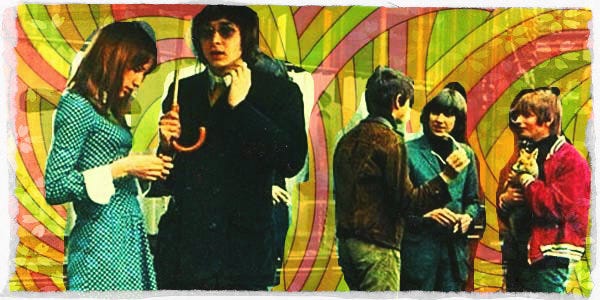
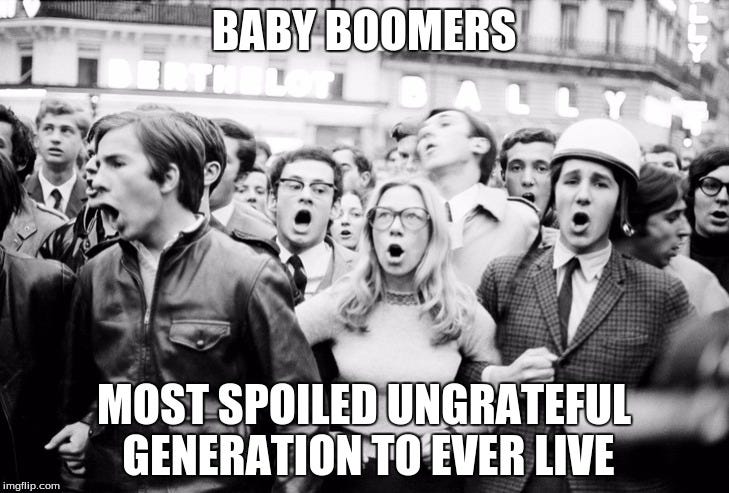
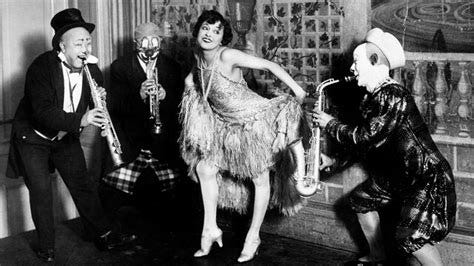
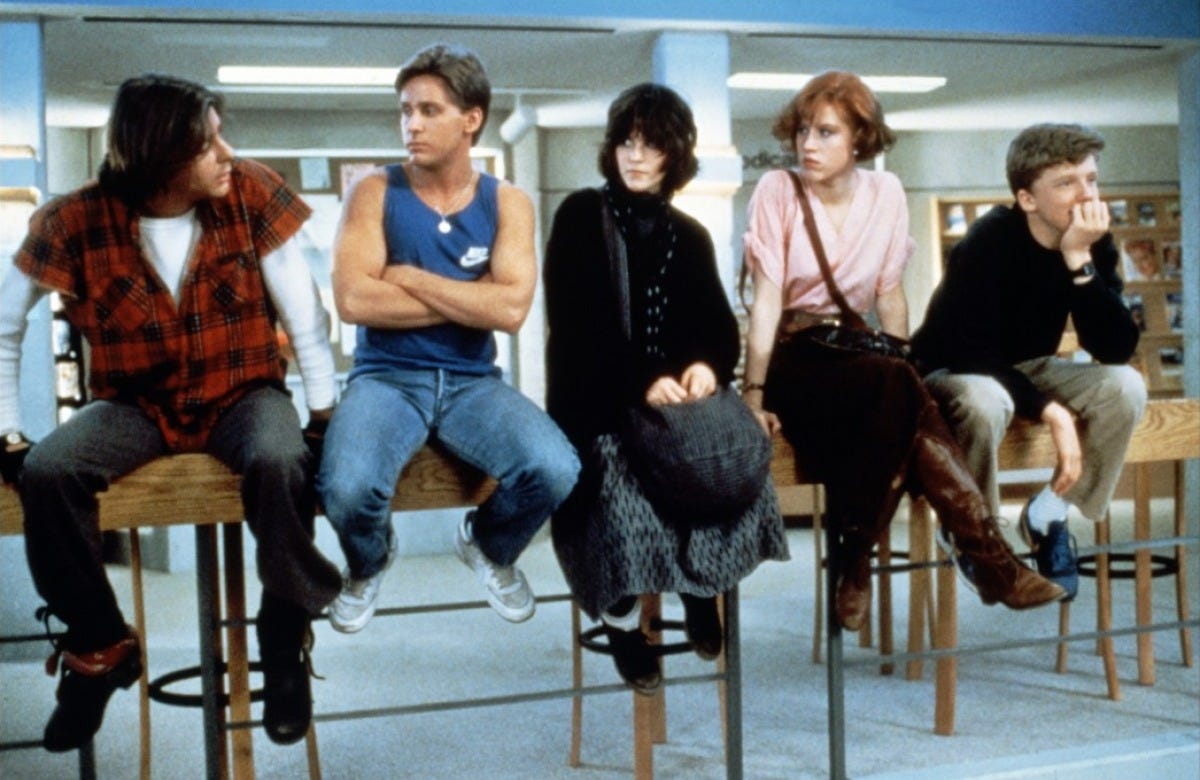
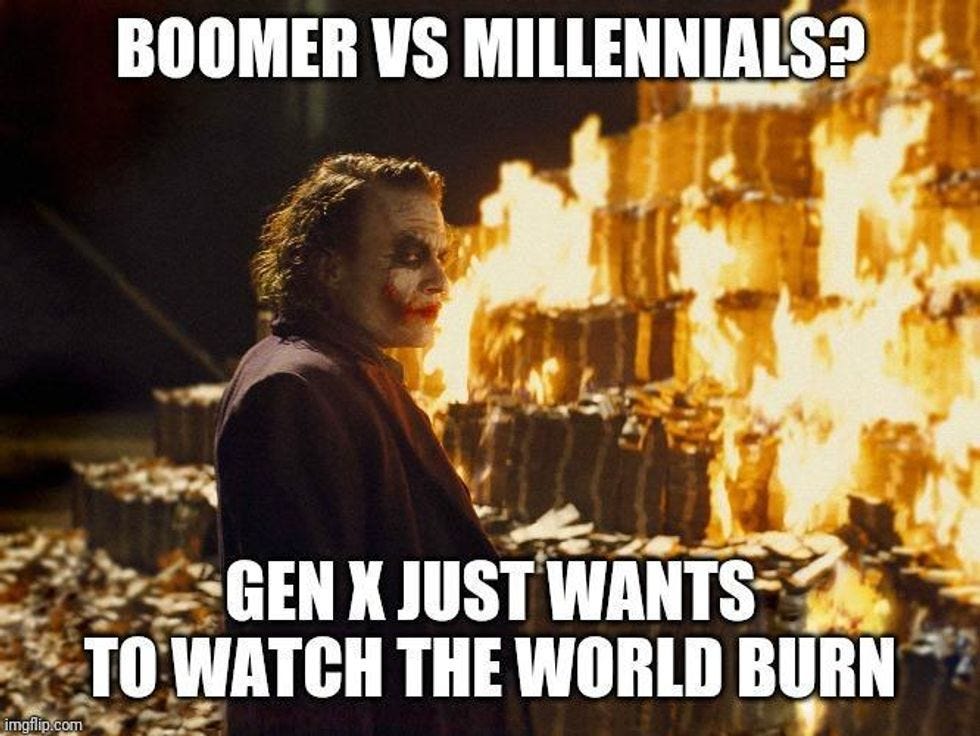



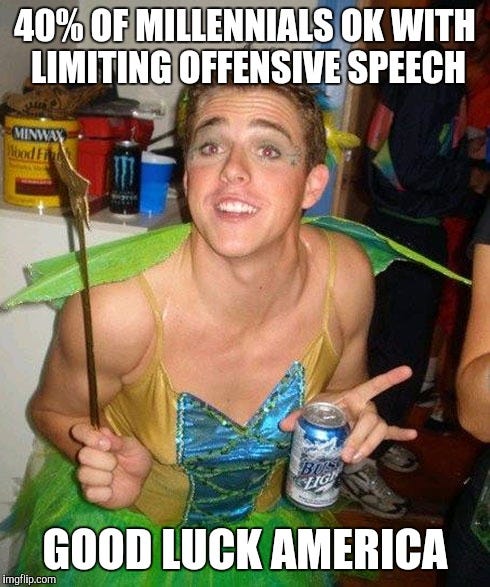
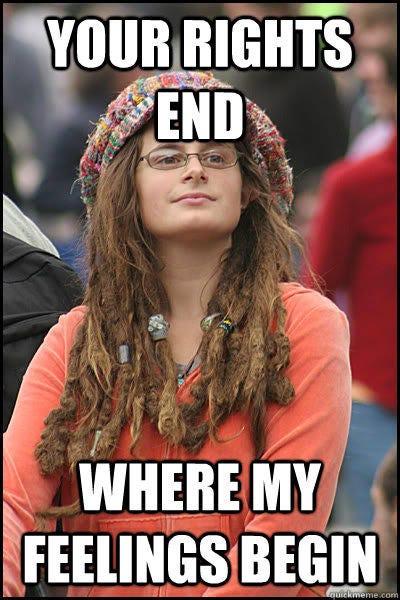
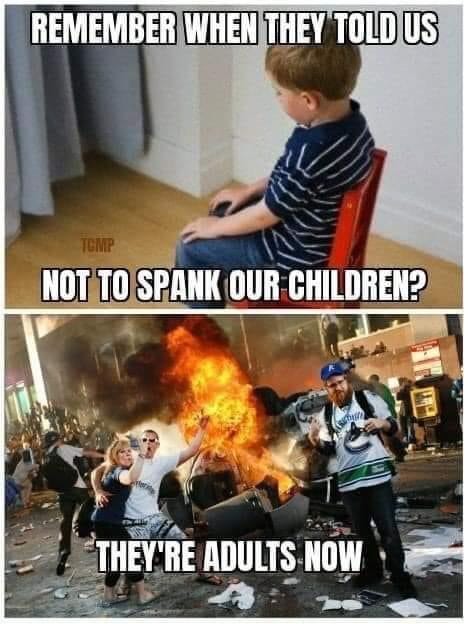
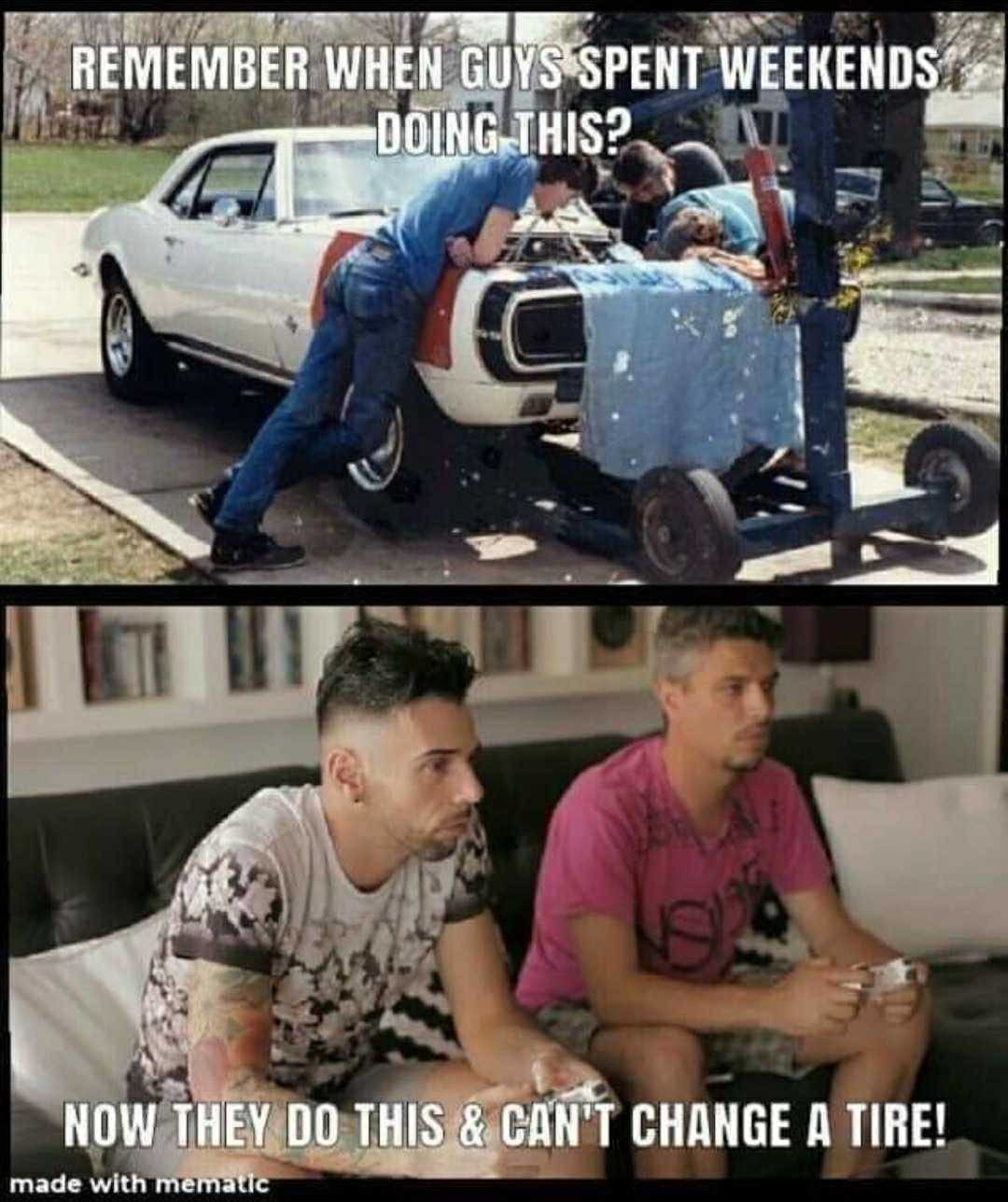


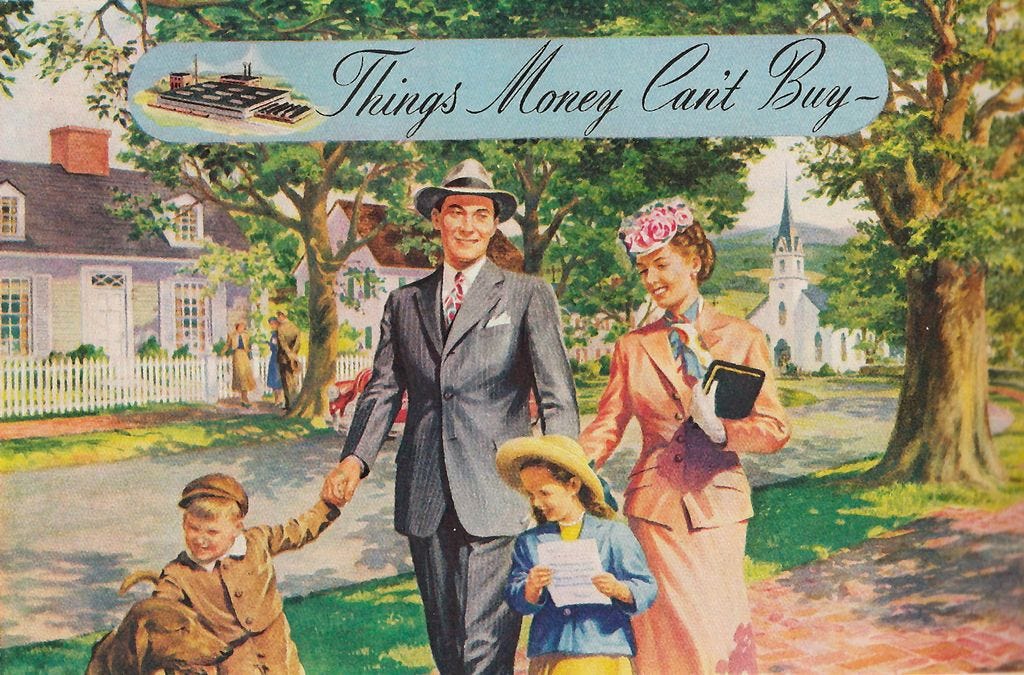
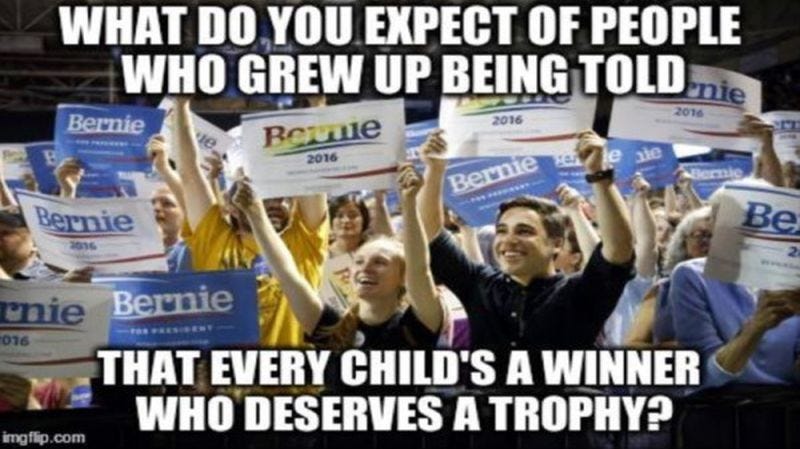

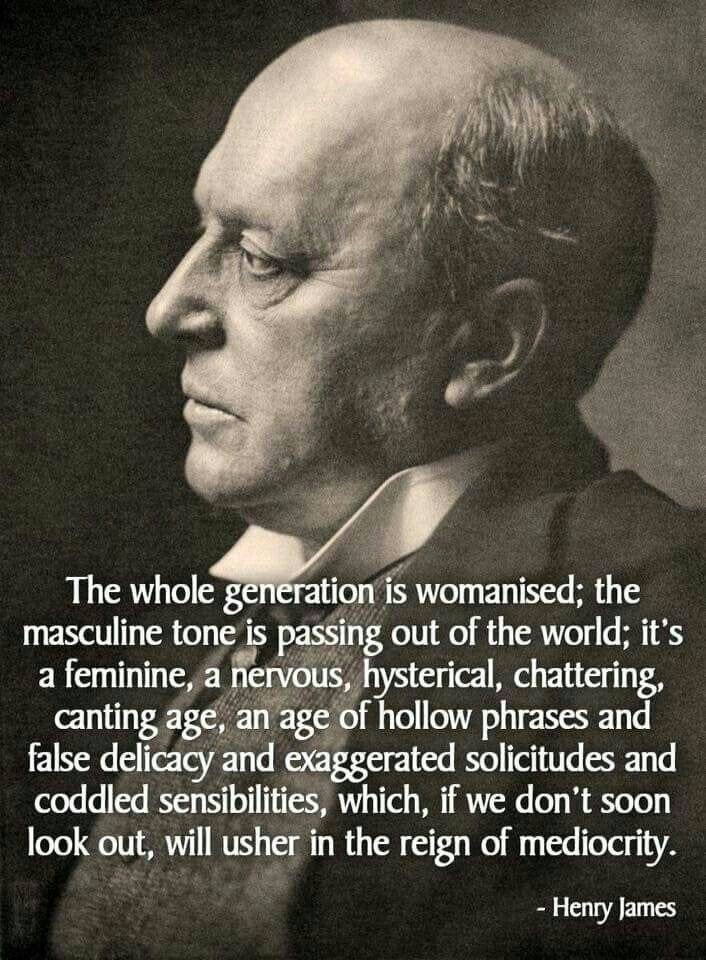
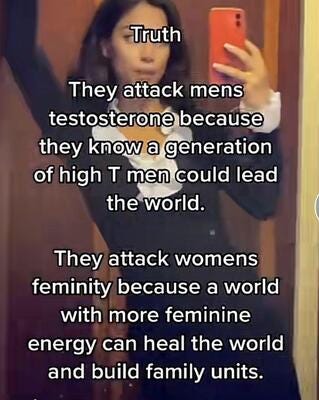
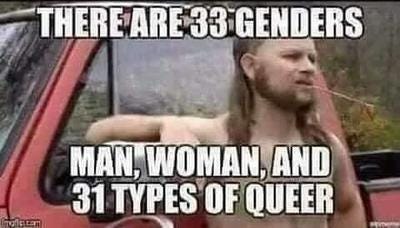


Very interesting! I know I've read about generational theory before, it's just been a long time. We're definitely on the edge of a turning, we'll just have to see how it goes. My kids are hitting adulthood and getting ready to spread their wings, and I think they fall into the Artist category. Heh, so do I, tbh. But the world needs all of them. We won't see any great strides in societal change without mass repentance and a return to Jesus, but I'm hearing rumblings everywhere of people accepting Christ in numbers that will never be reported on the news. The little church we started attending is growing steadily. I think it's all good signs.
Interesting read. One thing about being American is that your grand operatic symphony makes self-awareness an easier task. When you have highs, they hit high. When you have crises, they are loud.
Us Canadians have experienced more of an ambient soundscape, where the changes - until very recently - were gradual, flattened and easily ignorable. I'm not sure which is preferable.
I can see you are able to position your own artistic output within this framework. But not having a clear view of the context means I just basically have to do work and not really factor where it fits in. Just let the imagination go and see how it turns out I guess.